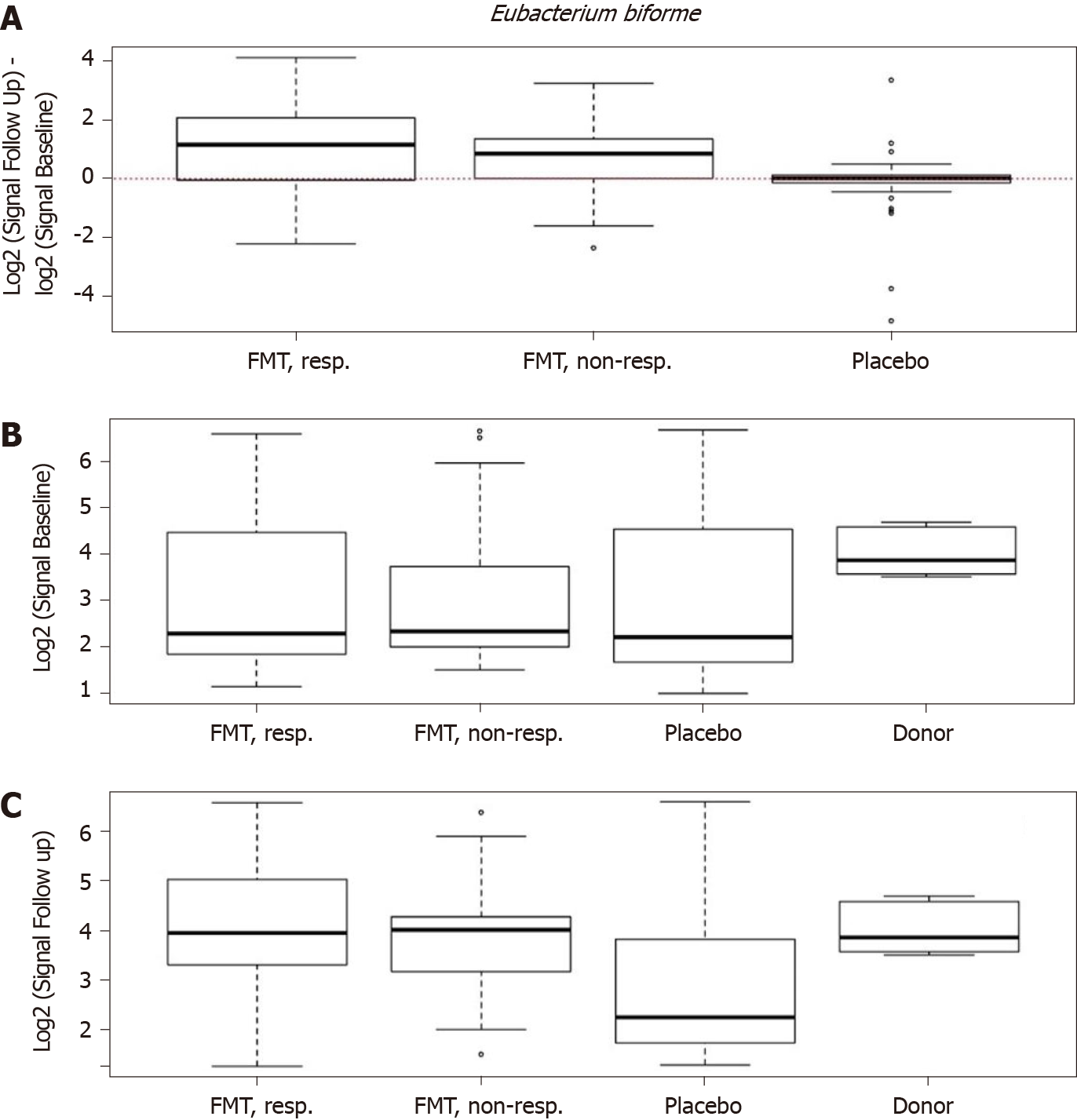Copyright
©The Author(s) 2021.
World J Gastroenterol. Jun 14, 2021; 27(22): 2921-2943
Published online Jun 14, 2021. doi: 10.3748/wjg.v27.i22.2921
Published online Jun 14, 2021. doi: 10.3748/wjg.v27.i22.2921
Figure 9 Differences in signals for Eubacterium biforme in the responder, nonresponder, and placebo groups between before and 1 mo after transplantation.
There were significant changes in the signal levels in responders (P < 0.001). The nonresponders also exhibited increased signal levels, though the changes were smaller than those in the responders. A: The signal level did not change in the placebo group; B: Signal levels at baseline were similar in the responder, nonresponder, and placebo groups, but they were higher for the superdonor; C: The signal levels in the responders and nonresponders became as high as that for the superdonor after fecal microbiota transplantation, while that in the placebo group did not change.
- Citation: El-Salhy M, Patcharatrakul T, Gonlachanvit S. Fecal microbiota transplantation for irritable bowel syndrome: An intervention for the 21st century. World J Gastroenterol 2021; 27(22): 2921-2943
- URL: https://www.wjgnet.com/1007-9327/full/v27/i22/2921.htm
- DOI: https://dx.doi.org/10.3748/wjg.v27.i22.2921









